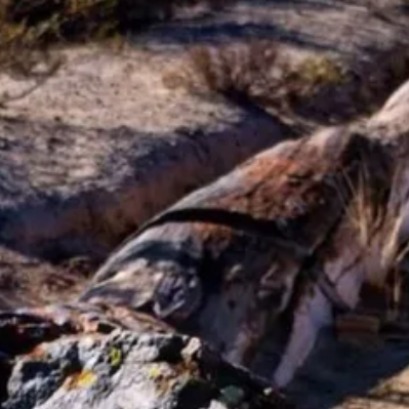.jpg)
Fábrica de árboles: generan 6.000 por año para cambiar el paisaje verde de la Ciudad
Trabajan en la Reserva Ecológica y en el Parque Avellaneda para renovar los ejemplares que están en veredas y parques. Los expertos dicen que la arboleda actual está desactualizada.
“La arboleda quedó desactualizada. Los plátanos dan alergia, las tipas se caen y hay tantos fresnos que si un hongo los enferma perdemos la mitad de los ejemplares”, dice Jorge Serángelo, un técnico botánico con más de 30 años entre árboles. Trabaja en el Parque Avellaneda dentro de una cúpula de varillas flexibles y cubierta de lona. La llaman domo y guarda 1.000 ejemplares distribuidos en macetas negras de distintos tamaños y decenas más, que aún son semilla y esperan su germinación en bandejas llenas de compost y sustrato de río. La cúpula tiene estética de ciencia ficción: blanca y de bordes metálicos, hecha sobre el esqueleto de un viejo tanque australiano.

IT MAY INTEREST YOU
 The forest of the oldest shadows: the story of the petrified trees
The forest of the oldest shadows: the story of the petrified trees
One of the natural treasures of Río Negro turns 23 years old under the protection law that allows its conservation. Where it is and how it was formed. Río Negro celebrates 23 years of conservation in the petrified forest as a Protected Natural Area (ANP). It is a space of 625 hectares that protects an exceptional site of fossil trunks that date back more than 60 million years.
 The second largest wetland in South America is located in Argentina: what is it?
The second largest wetland in South America is located in Argentina: what is it?
Argentina has national parks that place it in a unique position within South America, competing with 300 others. Which is the largest? South America is home to more than 300 national parks, but many go unnoticed. There are extensive wetlands that have been the subject of major ecological restoration projects, to coastal mountains with deep indigenous heritage. Today we tell you the case of one located in Argentina.
 Missions | New illegal felling in the Piñalito Provincial Park in San Pedro reveals the silent expansion of deforestation in protected areas
Missions | New illegal felling in the Piñalito Provincial Park in San Pedro reveals the silent expansion of deforestation in protected areas
The advance of deforestation on protected areas was once again evident this week in the Piñalito Sur Provincial Park, in San Pedro, where the Ministry of Ecology and Renewable Natural Resources confirmed a new case of selective illegal logging. The event occurs in a context of growing concern about the fragility of the environmental control system in rural and border areas, where the scarcity of resources, personnel and logistics limits the capacity of surveillance against criminal organizations organized to steal native woods and market them on the black market in connivance with sawmill owners.





















